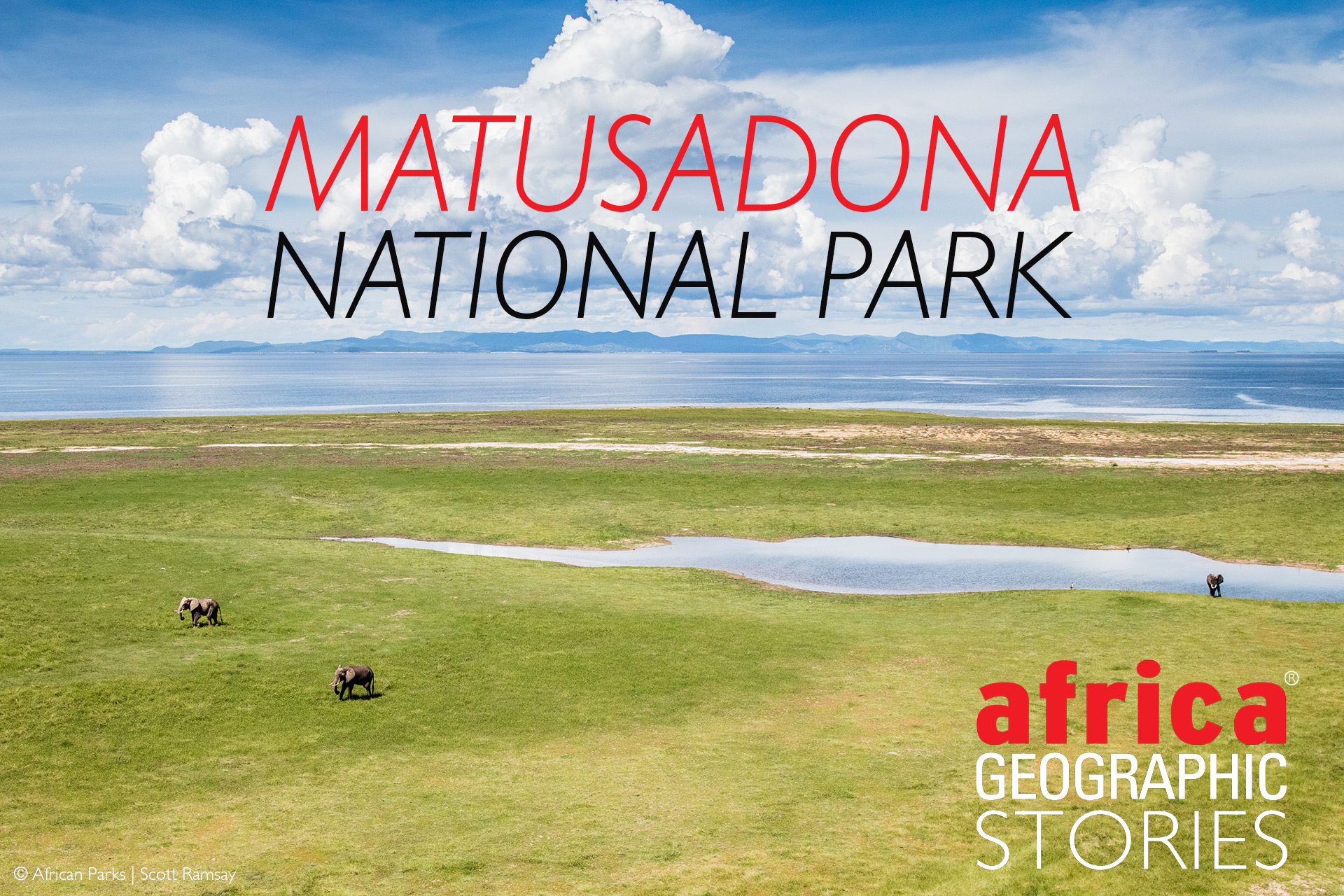
Elephant paradise on Lake Kariba's shores

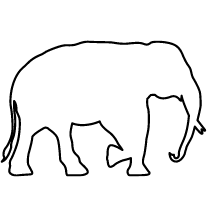
It’s got mountains; it’s got rivers; it’s got sights to make you shiver… There is something intensely gratifying about watching wild animals do something purely for enjoyment. Swimming elephants are the perfect example as they bob and wrestle in the water, using their trunks as built-in snorkels. For the elephants of Zimbabwe’s Matusadona National Park, Lake Kariba dominates their landscape like the world’s wildest swimming pool, there for them to plunge into at the end of a hot, dry day.
The carousing elephants of Matusadona National Park paint a carefree picture that belies the intense work going on behind the scenes to secure the park’s future. Yet, for all its challenges, Matusadona seems set to reclaim its rightful place as a top safari destination in one of Africa’s most spectacular wildlife regions. For more top African safari destinations, click here.
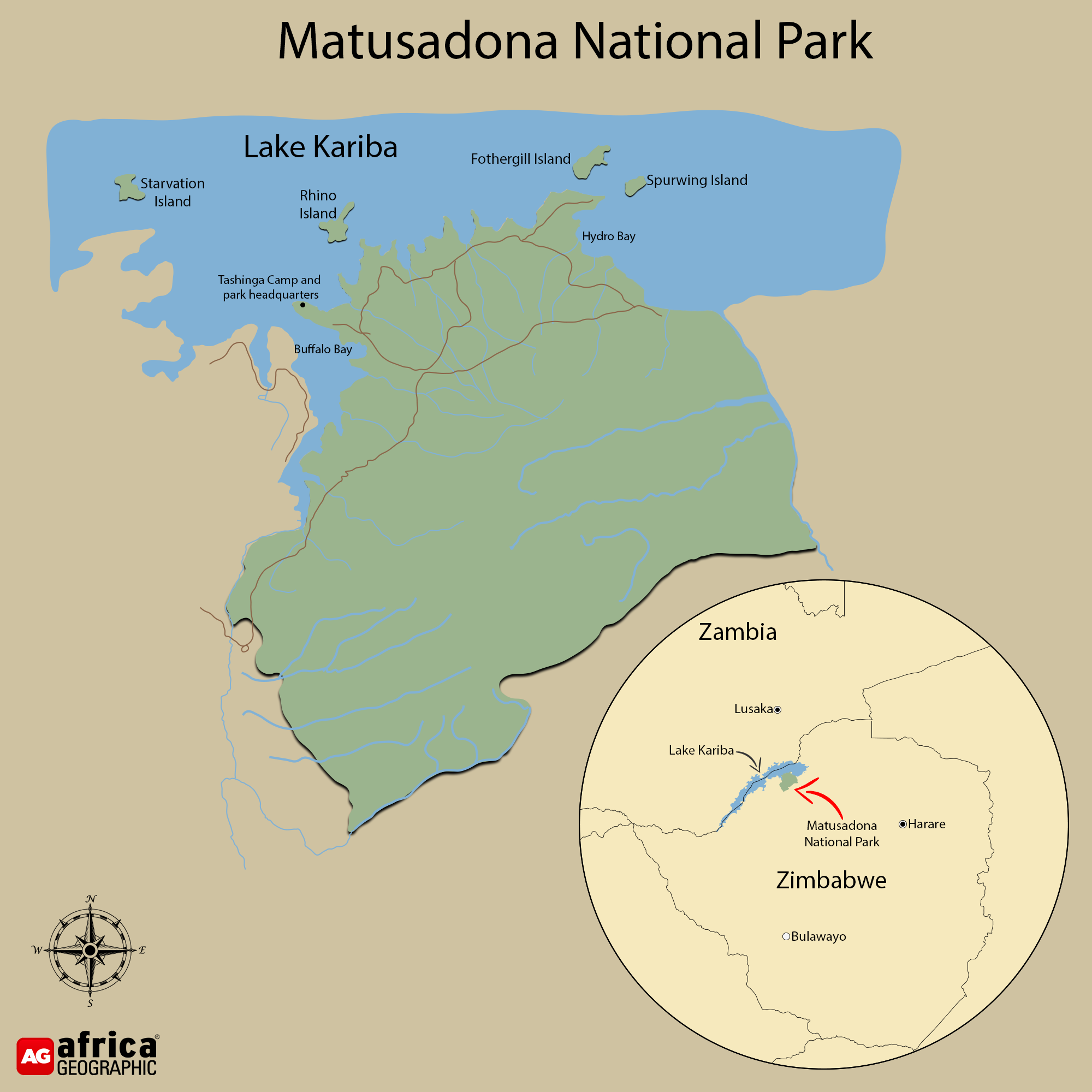
Matusadona National Park
Matusadona National Park lies on the southern shore of Lake Kariba in northern Zimbabwe, consisting of over 1,400km² (140,000 ha) sandwiched between the Sanyati Gorge to the east and the perennial Ume River to the west. The park’s character is defined by its magnificent scenery imparted by an unusual combination of engineered geography and natural geology. The vast flats of the floodplains and grasslands rapidly give way to the steep wooded slopes of the Matuzviadonha Mountains. These mountains form part of the undulating Zambezi escarpment and tower some 700 metres above the Zambezi Valley floor, dominating the park’s southern horizons. The name “Matusadona” derives from a colonial mispronunciation of “Matuzviadonha”, which, in turn, roughly translates to “fallen dung” – probably a reference to the region’s longstanding status as an elephant paradise.
It would perhaps be deceptive to describe Matusadona as a “pristine” wilderness, given that its most prominent geographical feature is Lake Kariba, the world’s largest artificial lake (by volume). Instead, it is a fascinating illustration of how human forces can shape a landscape, but nature will eventually adapt around it. However, at the time, the construction of the Kariba Dam and the gradual taming of the mighty Zambezi River necessitated one of the most extensive wildlife operations in history. From 1958 until 1964, Operation Noah facilitated the movement of 6,000 wild animals – from elephants and rhinos to birds and snakes – away from the rising waters. The vast majority were relocated to Matusadona National Park.
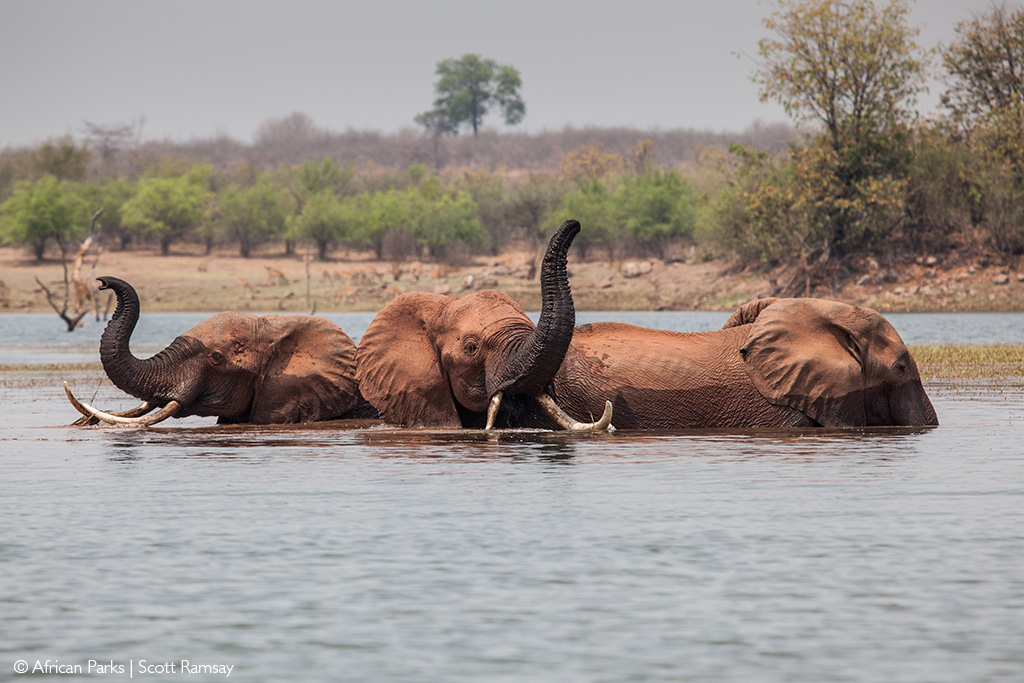
It seems impossible to imagine that such a slight to the very fabric of the Zambezi Valley could be endured with such natural grace, but some 60 years later, nature has rebounded. The lake has become part of the landscape, creating an atmosphere, not unlike that on the shores of one of Africa’s natural Great Lakes. Its water levels have a tremendous cyclical effect on the life surrounding it. On its banks, rich and nutritious grasses flourish during times of low water, providing myriad herbivores with plentiful grazing. Away from the floodplains, the thick mopane and Combretum woodlands of the Zambezi Valley floor hide the park’s browsers. Only the ghostly skeletons of a drowned forest rising from the waters serve as a reminder of the lake’s history while simultaneously furnishing the perfect backdrop for dramatic photography.


Out of sight…?
Operation Noah put Matusadona on the map, and the park earned a reputation as one of Africa’s elephant strongholds. However, the park has always been somewhat off the beaten track. As Zimbabwe plunged into political instability, Matusadona dropped off all but the most dedicated radars. The park’s rugged terrain and limited manpower, financial resources and infrastructure made protecting it almost impossible. Rampant poaching wiped out the black rhinos and severely reduced the elephant population. Fortunately, the inaccessibility favouring the poachers hindered agricultural ingress, and the park’s habitat integrity has remained intact.
In 2019, the non-profit organisation African Parks partnered with the Zimbabwe Parks and Wildlife Management Authority, signing a 20-year agreement to take over the management of Matusadona. While the park’s larger animals have suffered the abuse of the past, the fact that much of Matusadona’s diversity has endured offers a unique opportunity for restoration. In keeping with African Parks’ well-established methodology, increased security, improved community relations and carefully planned wildlife reintroductions will secure the park’s long-term future and allow Matusadona to live up to its phenomenal potential.
 DID YOU KNOW that African Parks offers safari camps (lodges and campsites) where 100% of tourism revenue goes to conservation and local communities? Find out more and book your African Parks safari.
DID YOU KNOW that African Parks offers safari camps (lodges and campsites) where 100% of tourism revenue goes to conservation and local communities? Find out more and book your African Parks safari.

Matusadona is full to the brim
The intervention of African Parks was well-timed, and the park remains one of Zimbabwe’s wildlife tourism destinations. Naturally, elephants are the park’s most iconic residents. Not much can top the sight of these magnificent pachyderms frolicking in the lake or dwarfed by the vast floodplains surrounding them. Herds of waterbuck, zebra and impala dot the shore, while hippos and crocodiles inhabit its waters (hence why it would not be a good idea to follow the elephant’s example into the water!). Leopard, wild dog (painted wolf), spotted hyena, eland, sable and roan antelope are all inhabitants.
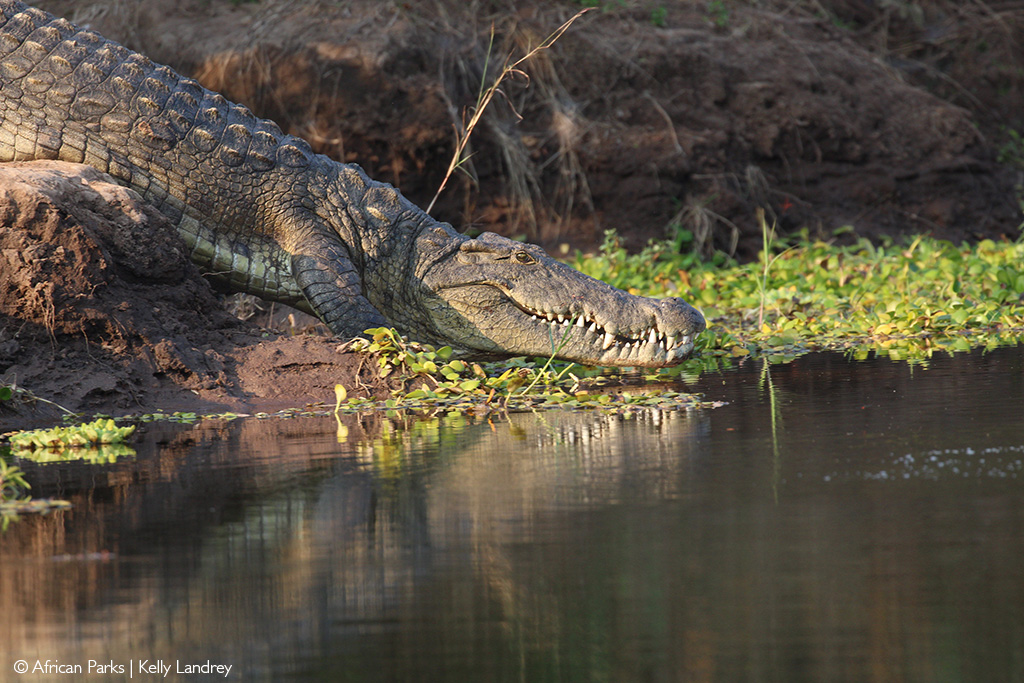
Matusadona is home to substantial herds of buffalo, though their numbers over the years fluctuate depending on the lake water levels (and thus available grazing). At one point some 50 years ago, increased grazing supported enormous numbers of buffalo, feeding what was then one of the highest densities of lions in Africa. However, as water levels rose to flood parts of the grasslands, the buffalo numbers declined, as did the lion population. Since then, environmental and human pressures have kept lion numbers low. However, around 40 or so of these iconic big cats reside within the park.

It should come as no surprise that with such diverse habitats, the birding in Matusadona is thrilling for experts and amateurs alike. Fish eagles are ubiquitous, as are many other water-loving birds, including herons, storks, egrets, cormorants and darters. African finfoots inhabit the Sanyati Gorge in the east, while the eastern Ume basin provides the perfect habitat for nesting marabou storks and vultures. Trumpeter hornbills regularly pass overhead, uttering their child-like cry, and, with a bit of luck, the tiny Kittlitz’s plover may even perform its broken wing display. Brightly coloured kingfishers and bee-eaters complete the avian feast for the eyes.


Explore & stay in Matusadona
Want to go on a safari to Matusadona? To find lodges, search for our ready-made packages or get in touch with our travel team to arrange your safari, scroll down to after this story.
For the wildlife enthusiast, the best time to visit Matusadona is during the dry season, from June until October. As the smaller pools and rivers begin to dry up, animals are drawn to the edge of Lake Kariba, setting the scene for some spectacular sightings. However, by September and October, temperatures can easily top 40°C during the day. Those that enjoy safaris beyond the search for the Big 5 will enjoy the rugged beauty of the green season from November onwards. While temperatures are still high, migrant birds arrive, and baby animals are everywhere. The gathering of cumulonimbus clouds of the first summer thunderstorms over the lake also offers the chance for some breathtaking photography.
Matusadona is a park that encourages more than one approach to its exploration. Of course, there are the standard open-vehicle game drives, but Zimbabwe is home to some of the best walking guides in Africa, and it would be a shame to miss out on the opportunity to wander this magnificent wilderness. Of course, water-based activities are essential, and visitors can opt for a slow boat cruise to take in the scenery or a more thrilling canoe safari past elephants feeding on the lake shore. Though the park is somewhat off the more traditional Zimbabwean safari route, it is most easily accessed by air or boat. There are also several beautiful luxury lodges, some neatly positioned on a private island. There are campsites for the more budget-strapped, and hiring a houseboat and mooring in one of the park’s scenic lagoons for a night or two is also an option.


Final thoughts
As a safari destination, Matusadona National Park faces some stiff Zimbabwean competition where names like Mana Pools National Park, Chitake Springs and Hwange National Park have become the stuff of legend. However, Matusadona’s history is a testament to the potential of this remarkable piece of African wilderness. In the capable hands of African Parks, there is no question that the park is heading towards an extraordinary future.

To comment on this story: Login (or sign up) to our app here - it's a troll-free safe place 🙂.![]()




